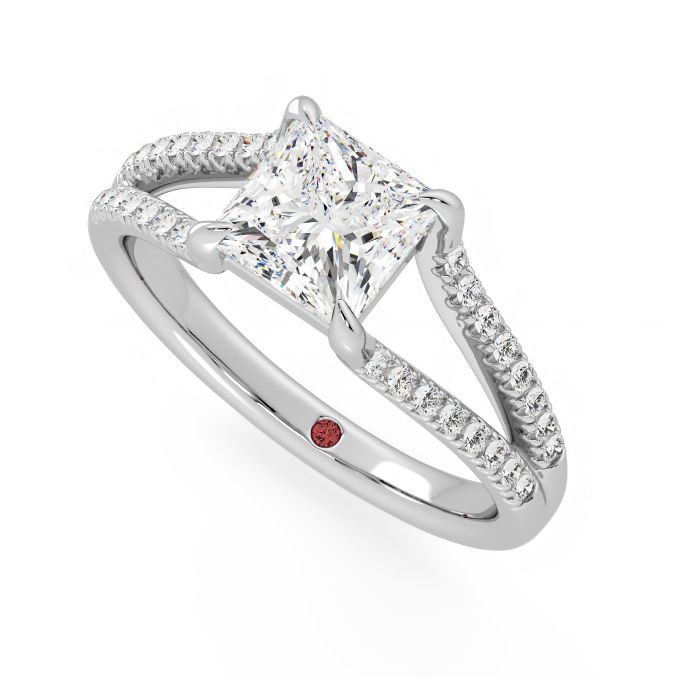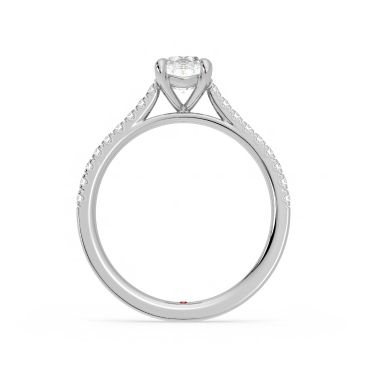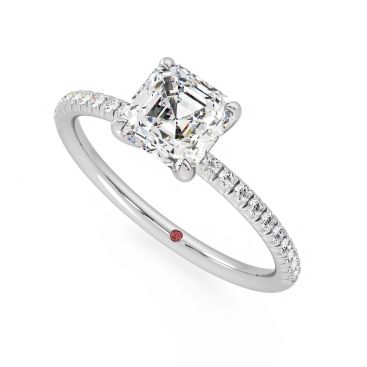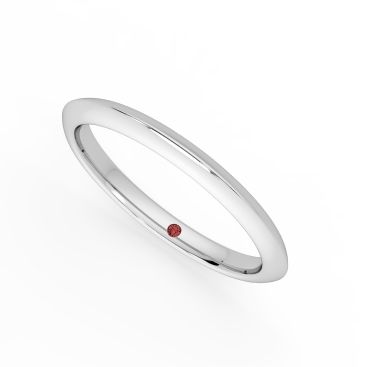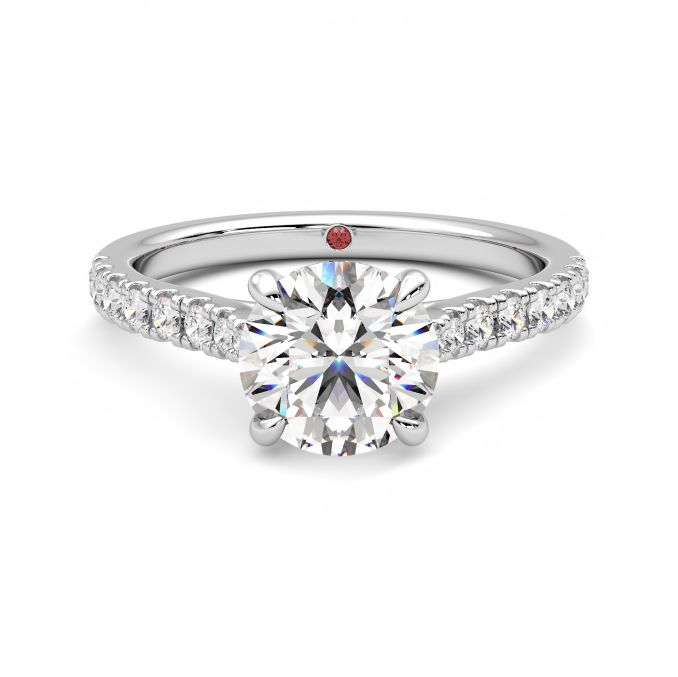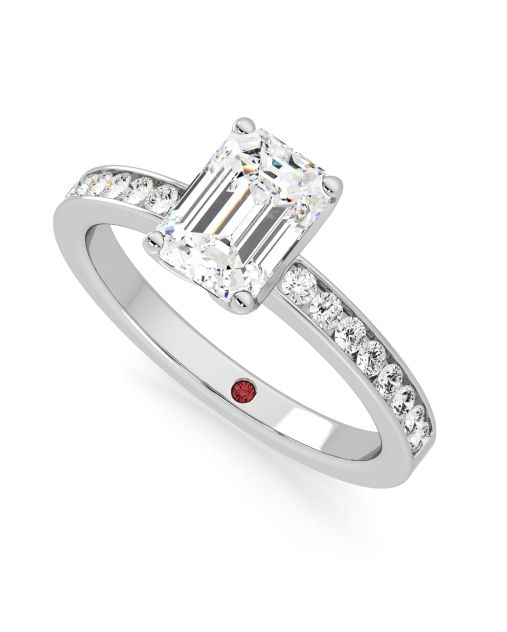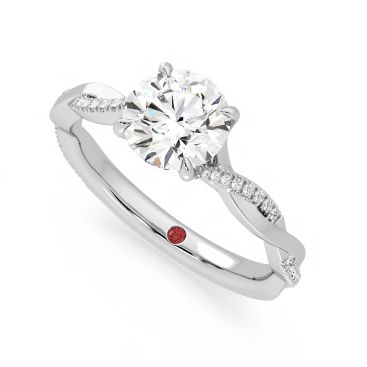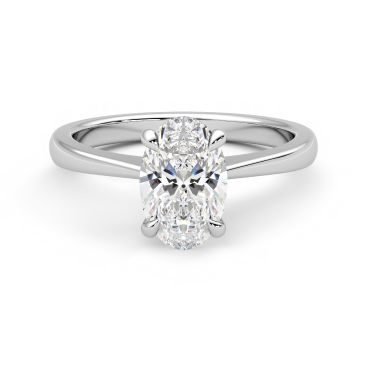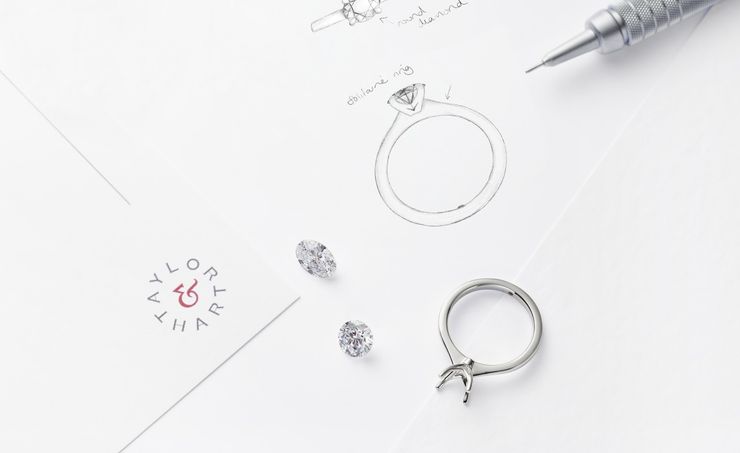Split shank
Split shanks are graceful and complement many diamond sizes and shapes. This particular style of shank divides into two before joining with the centre stone, giving the appearance of two separate bands. The split shank can be separated with a space in between or woven, twisted, or sculpted into different formations. The shank will merge back together towards the middle of the band to create a single band under the finger.


